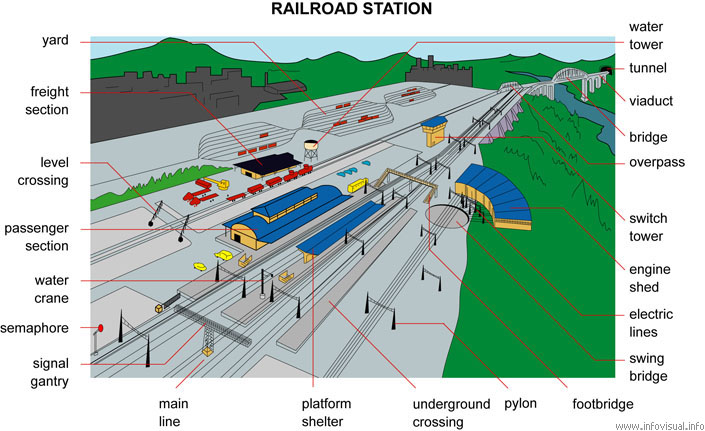|
Railroad station: set of installations
of a railway, where passengers embark and disembark and goods are loaded
and unloaded.
Water tower: water container.
Tunnel: underground passage.
Viaduct: railway bridge.
Bridge: construction that allows passage between two points separated
by a depression or an obstacle.
Overpass: elevation of a railway over a highway so they do not
intersect.
Switch tower: site from which the switching of trains from track
to track is controlled.
Engine shed: place where locomotives are stored.
Electric lines: set of wires conducting electricity.
Swing bridge: movable bridge used to turn railway cars around.
Footbridge: narrow passageway.
Pylon: tower-like construction, usually a support.
Underground crossing: tunnel.
Platform shelter: covered area.
Main line: the most important track.
Signal gantry: construction over railway tracks that supports
signals.
Semaphore: apparatus whose arm indicates whether or not a track
is in use.
Water crane: handling equipment for loading trains.
Passenger station: set of buildings where train passengers embark
and disembark.
Level crossing: intersection of a road and a railway.
Freight section: set of buildings used for the loading and unloading
of freight.
Yard: place where railway cars are assembled into train.
|
![]()













